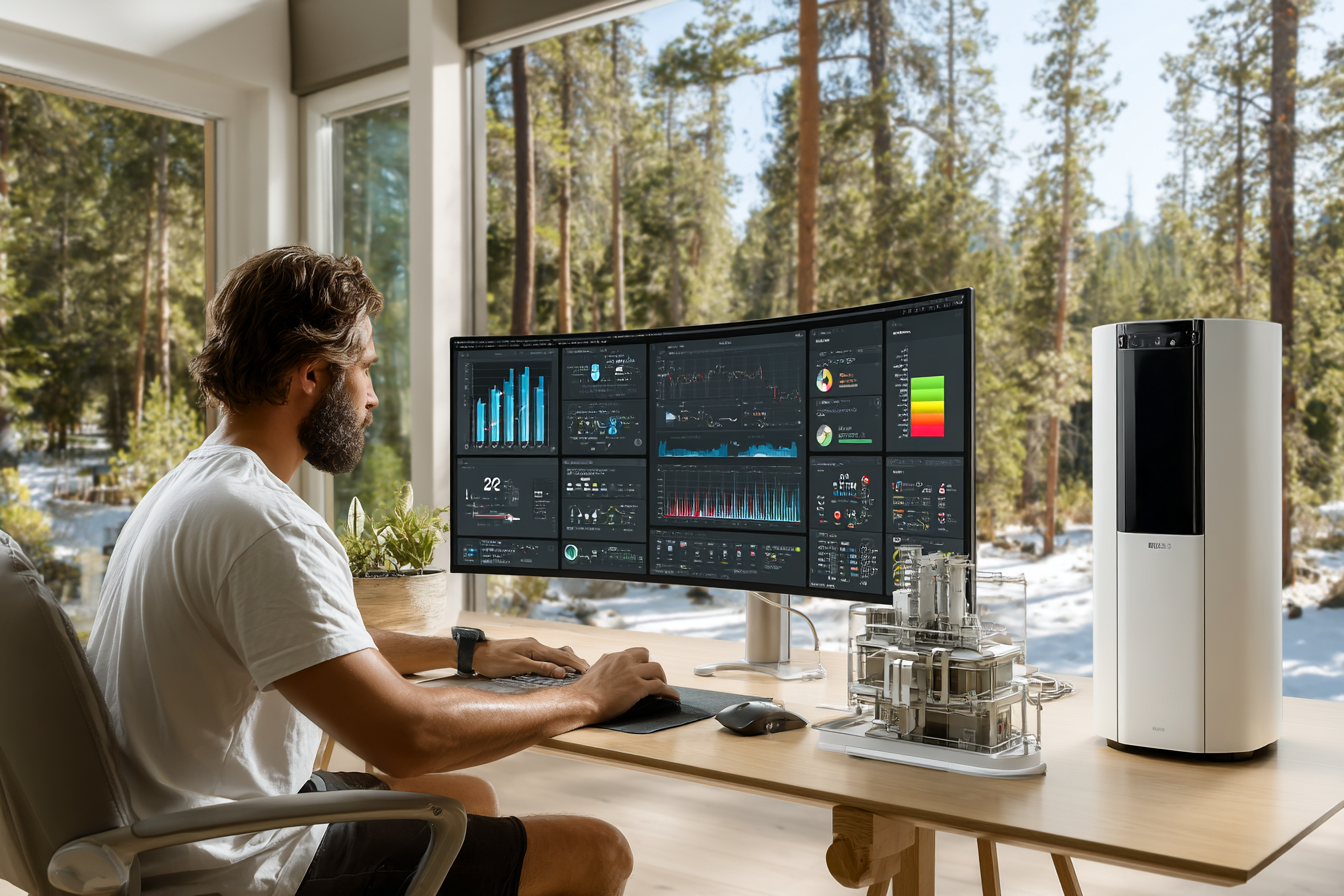HSPF vs SEER: Heat Pump Efficiency Ratings Explained for Canadians

Written by Solenery
2 min read
When shopping for a heat pump in Canada, you’ll come across two important efficiency ratings: HSPF and SEER. They’re often printed on system labels, talked about by installers, and required for rebates. But many homeowners wonder about the difference between HSPF vs SEER and which one matters most for their climate.
In this post, we’ll break down HSPF (Heating Seasonal Performance Factor) and SEER (Seasonal Energy Efficiency Ratio) in simple terms, explain how they’re calculated, and help you choose the right numbers to look for when buying a system that will perform year-round in Canada.
What Is HSPF and Why Does It Matter in Canada?
HSPF = Heating Seasonal Performance Factor.
It measures the total heat output over a heating season, divided by the electricity used to generate that heat. Think of it like your car’s litres-per-100km—but for winter heating.
HSPF Rating Guide
| HSPF Rating | Performance |
|---|---|
| 8.2 | Standard (min for ENERGY STAR®) |
| 9.0–10.0 | Good for most climates |
| 10.0–12.0+ | Excellent for Canadian winters |
The higher the HSPF, the more efficient the heat pump is at heating—crucial for provinces with long winters like Ontario, Quebec, and the Prairies.
Example: A heat pump with an HSPF of 11.0 uses 20–30% less electricity than one with a rating of 8.2.
Read more: How to Hide Your Heat Pump Without Blocking Airflow
What Is SEER and When Does It Matter?
SEER = Seasonal Energy Efficiency Ratio.
This rating applies to cooling efficiency. It’s the ratio of total cooling output to energy consumed during a typical cooling season.
SEER Rating Guide
| SEER Rating | Performance |
|---|---|
| 13–14 | Standard |
| 15–18 | Good |
| 19–21+ | Excellent |
In southern Canada (e.g. Southern Ontario or BC), where air conditioning is common, a higher SEER may help you save on summer cooling costs.
Tip: If you’re in a province where summers are short or mild, don’t over-prioritize SEER.
HSPF vs SEER: How to Choose the Right Heat Pump Rating for Your Climate
HSPF vs SEER Comparison
| Factor | HSPF | SEER |
|---|---|---|
| Measures | Heating efficiency | Cooling efficiency |
| Key for | Winter performance | Summer savings |
| Important in | All Canadian provinces | Ontario, BC, Quebec |
| Used for rebates | Yes (Canada Greener Homes, etc.) | No or less relevant |
For most Canadians, HSPF is far more important than SEER. Your heat pump will be heating your home 6–8 months a year, and cooling for just 2–3 months.
Rebates and Incentives: Why HSPF vs SEER Ratings Matter for Your Heat Pump
To qualify for Canada Greener Homes and most provincial programs, your heat pump must meet minimum thresholds:
Cold Climate Requirements
- HSPF ≥ 10.0.
- Performance at -15°C with COP ≥ 1.8.
- Listed on NRCan’s Cold Climate ASHP list.
Common Rebate-Eligible Brands
- Mitsubishi Zuba Central
- Fujitsu Halcyon XLTH
- LG Red Series
- Daikin Aurora
- Bosch Climate 5000
Example: An Ontario homeowner installed a Daikin unit with an HSPF of 11.7 and received:
Example Rebate Breakdown
- $6,500 from the HER+ program (Ontario).
- Additional provincial rebates available in 2025:
- BC (CleanBC): Up to 100% of costs for income-qualified households.
- Nova Scotia (Efficiency NS): Up to $6,000 for heat pumps.
- Manitoba (Efficiency MB): Up to $5,000 for heat pump upgrades.
- Alberta: Edmonton’s CEIP offers low-interest financing.
- Yukon: $0.80/W rebate up to $5,000 on qualifying heat pumps.
Curious whether a heat pump alone can handle your home’s heating needs? Check out our breakdown: Can a heat pump replace your furnace in Canada?
Where to Find HSPF vs SEER Ratings on Your Heat Pump
You can find HSPF and SEER ratings:
Where to Look:
- On the product’s yellow EnerGuide label.
- In the manufacturer’s spec sheet.
- Through your installer’s quote.
- On the NRCan website (search: Cold Climate Heat Pump List).
- Via Solenery Insights, which matches high-efficiency models to your postal code and climate zone.
Always ask for the full performance spec sheet, not just the max HSPF or SEER.
Conclusion
When comparing HSPF vs SEER, the key is to match your choice to Canada’s climate. If you face long, cold winters, prioritize a higher HSPF rating for reliable and efficient heating. In warmer regions where summer cooling costs matter, SEER also plays a bigger role. By understanding these two efficiency ratings, you’ll be better prepared to choose a heat pump that maximizes comfort, saves energy, and qualifies for valuable rebates.